In Images: Utah's Cosmic Ray-Finding Telescope
Hybrid detection telescope array
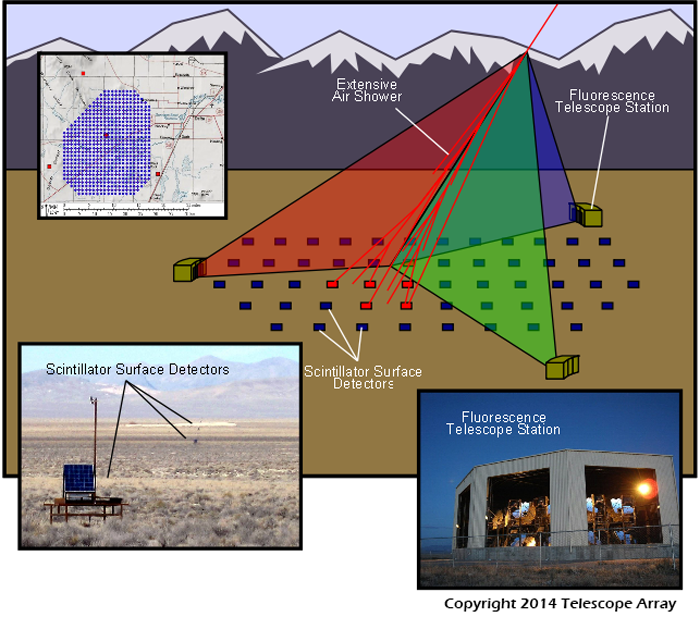
This artist's rendering depicts how the three fluorescent telescope sites combined with the over 500 surface detectors work together to detect a cosmic ray event. The triangle wedges indicate what the sites observe and the red boxes indicate surface detectors hit by shower particles.
Cosmic ray composition

At the lowest energies, cosmic rays are made of: 50% protons, 25% alpha particles, 13% Carbon, Nitrogen, Oxygen nuclei, 1% electrons, and 0.1% gamma rays.
Extensive air shower
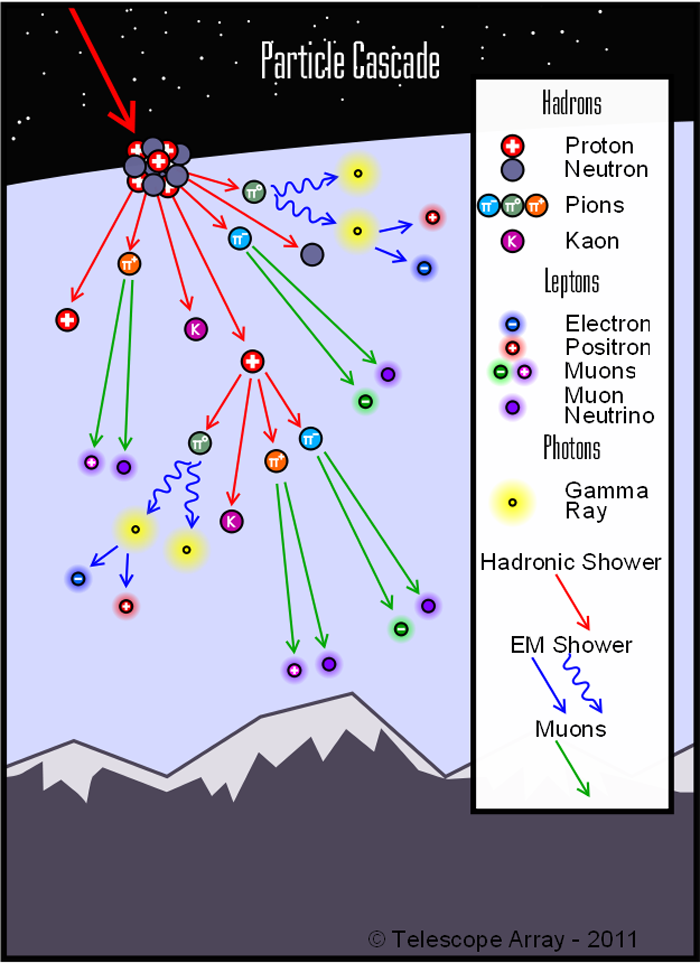
An extensive air shower begins with a collision between a cosmic ray and a nucleus; the first collision produces more than a thousand secondary particles which retain a large amount of energy. As a result the new particles repeat the collision process which can grow to billions of particles.
Emission
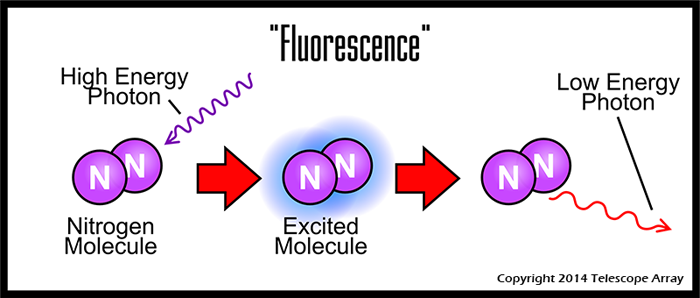
A common application of fluorescence — the process by which atoms absorb photons of one wavelength and emit photons at a longer wavelength — is found in many households as fluorescent lights. To create the effect an electric current collides with mercury atoms, exciting the mercury causing them to emit Ultra Violet (UV) light. This emission is actually referred to as "luminescence" or "scintillation." The UV photons are absorbed by the coating of the bulb which glows; this re-emission process is called "fluorescence."
Fluorescence detection
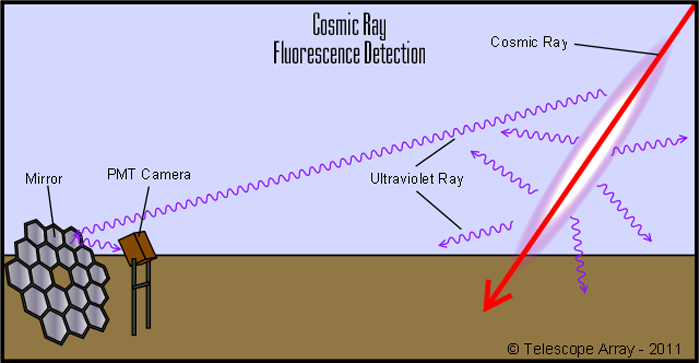
The Telescope Array telescopes — "fluorescence" telescopes which observe the development of extensive air showers passing through Earth's atmosphere — gather light from the air showers using large, curved mirrors, focusing the light onto pixels called Photomultiplier Tubes (PMTs). These sensitive tubes convert light to an electrical signal. Capable of observing objects moving at the speed of light more than 20 miles away, the sensitivity works only on clear moonless nights in the clean, dry air of the western desert.
Fluorescence technique
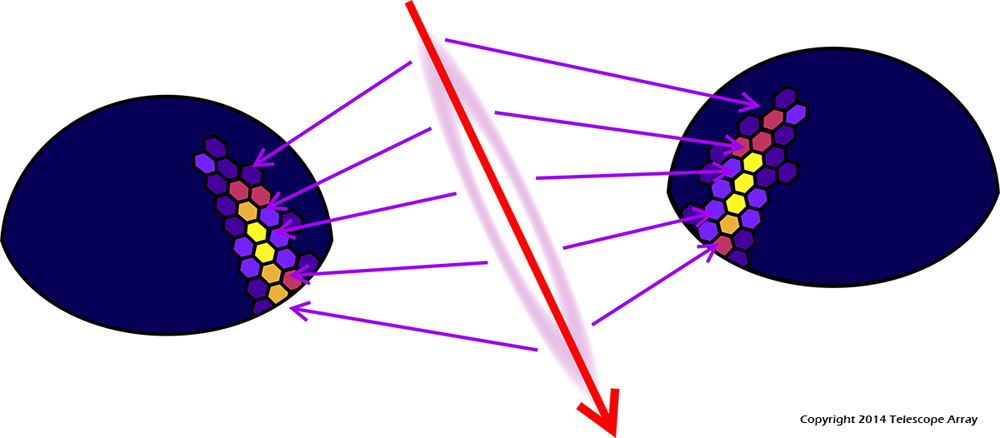
The Telescope Array operates in stereoscopic mode much the way human eyes work. By capturing the extensive air showers from two sites, more information can be collected about the shower, including the direction from which the shower came which points back to the source of the primary cosmic ray.
Scintillation detection
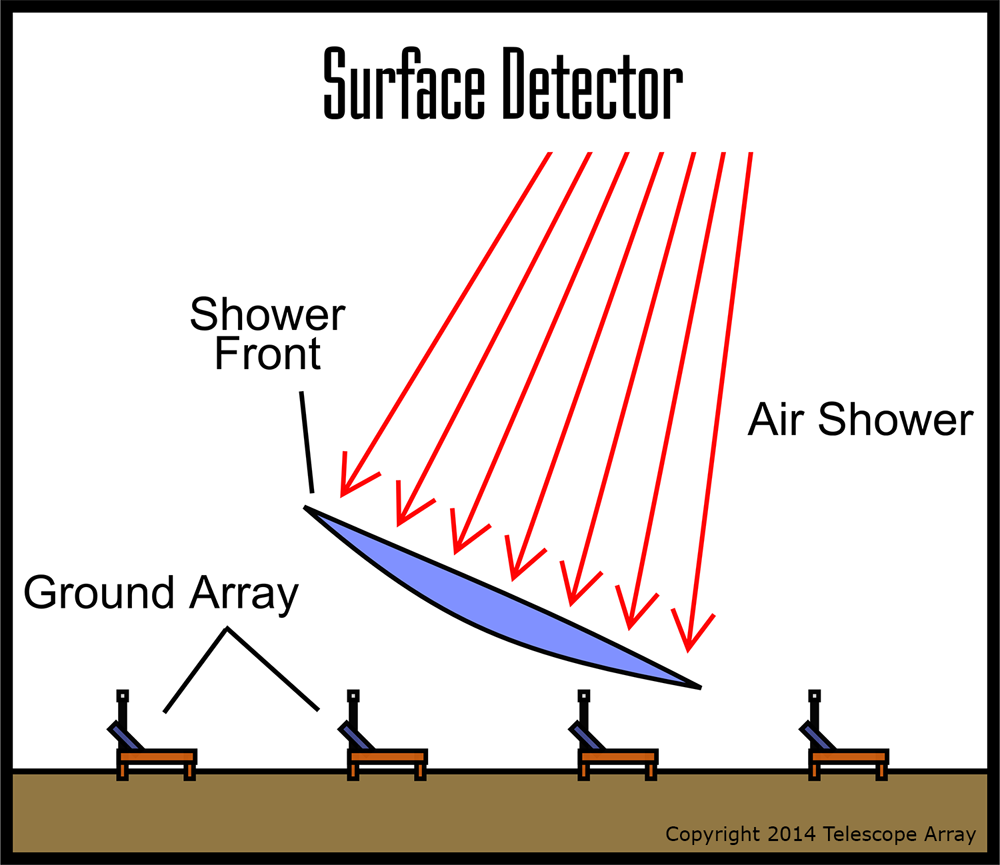
When an Extensive Air Shower forms in the atmosphere, a layer of secondary particles eventually reaches the ground. The surface detector samples these secondary particles. This array, found west of Delta, Utah, covers about 300 square miles (730 square kim).
Get the world’s most fascinating discoveries delivered straight to your inbox.
Scintillation detection
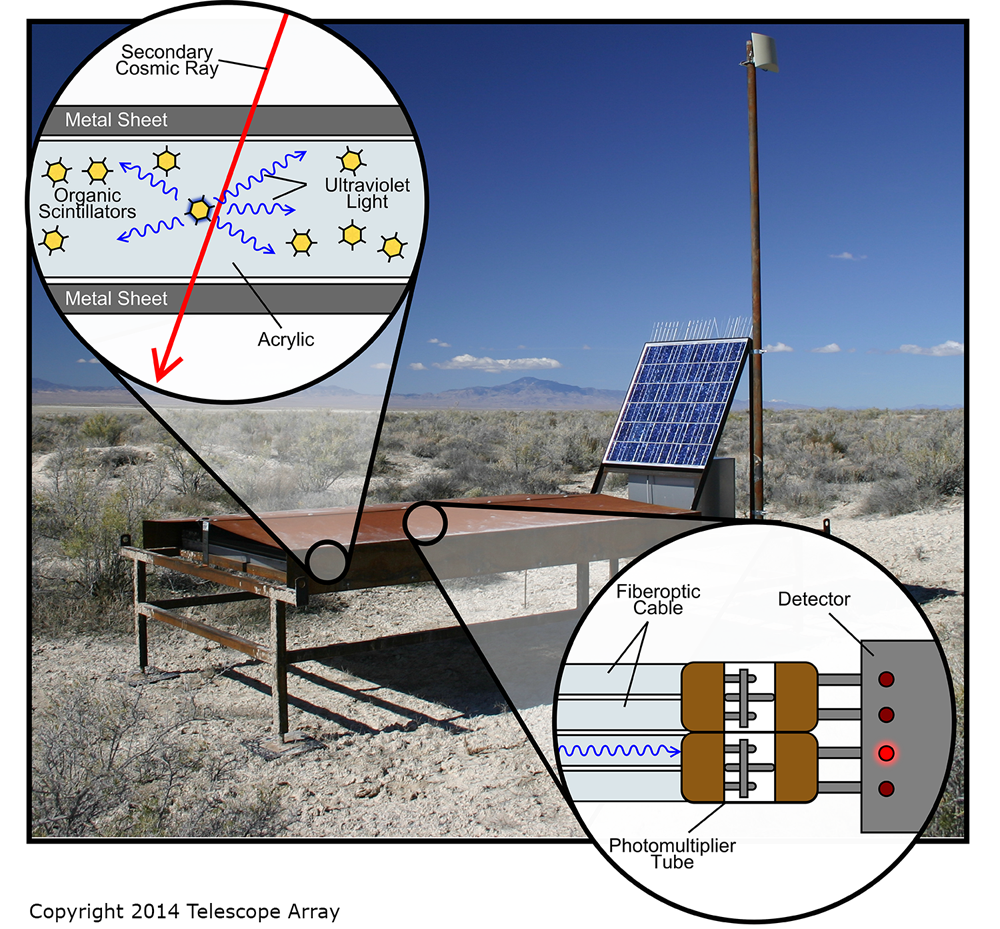
A single Telescope Array surface detector is made of an array of scintillator detection devices inside a metal-clad container about the size of a ping pong table. The detecting device consists of acrylic sheets infused with molecules specially designed to interact with charged particles. The scintillating molecules are excited by particles from a secondary air shower, releasing ultraviolet light. Optical fibers gather the light, directing it onto a PMT and converting it into an electrical signal. Information is collected for each shower and sent back to a central computer. Each detector is independently powered by a solar panel and operates twenty-four hours a day at better than 99 percent efficiency.
Flux chart
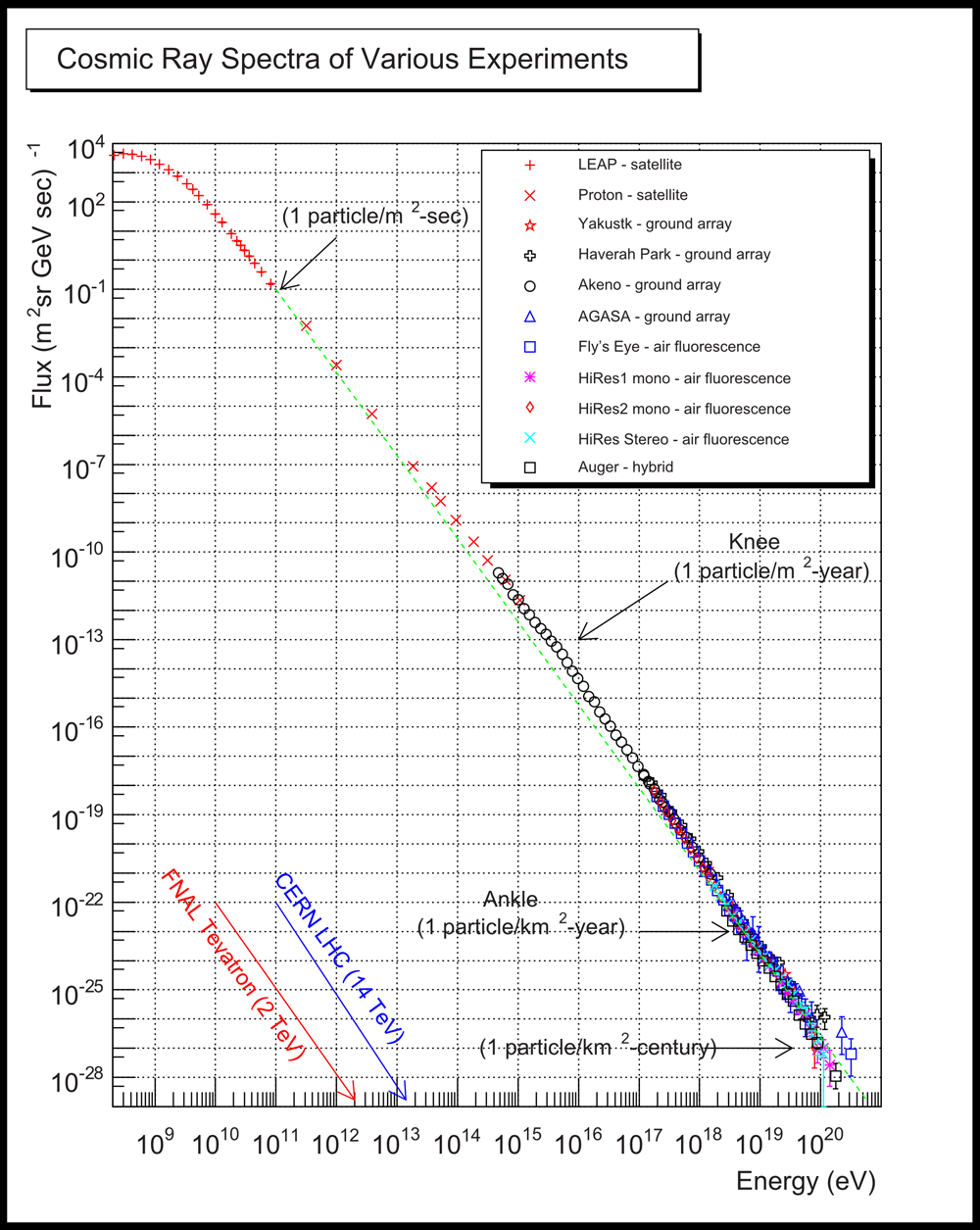
Cosmic rays arrive at the edge of Earth’s atmosphere with a variety of energies. Cosmic radiation, which is very common at the lowest energies, originates from sources close to Earth but we are shielded from most of the low energy particles by the Earth's atmosphere and magnetic field.
As the cosmic rays' energy increases, the particle frequency decreases sharply. Once at the Earth, the path of the rays experiences less bending in the magnetic field resulting in a deeper penetration into the atmosphere. Particles with intermediate energy levels, called Very High Energy cosmic rays, occur with a frequency of one per square meter per year. The highest energy cosmic rays — levels above 1016 eV — occur at a rate of one per square kilometer per century.
Multiple event display
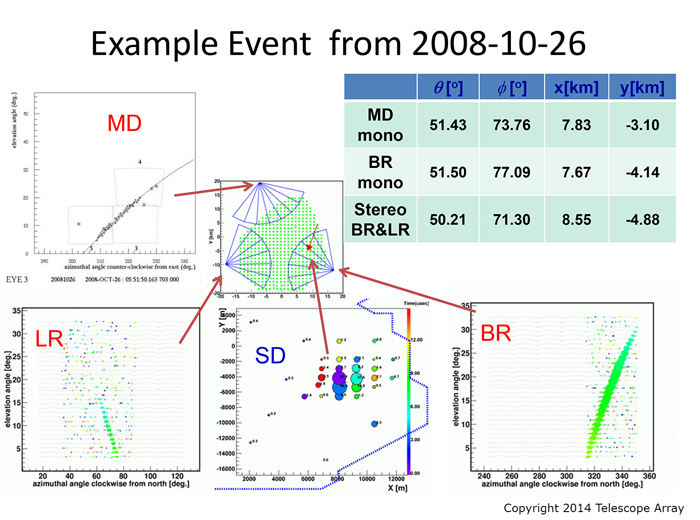
This graphic depicts an event display demonstrating the measurements of a cosmic ray induced extensive air shower from the perspective of each detector system. The three telescope stations (MD, BR and LR) each see a light track coming through the atmosphere and the Surface Detector (SD) array measures the dimensions of the shower when it reaches the surface of the Earth. The color of the circles indicates the time details for when the PMTs saw the light. The size of the circle indicates the amount of light detected.
OSLC TA DPG map
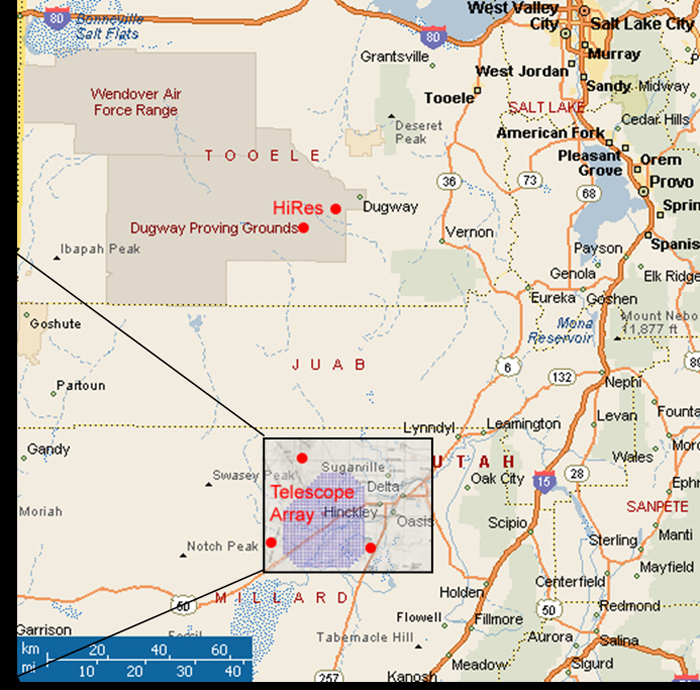
This map of Utah shows Salt Lake City where the University of Utah is located, the Army Dugway Proving Grounds and the Telescope Array ultrahigh energy cosmic ray detector outside of Delta, Utah.



